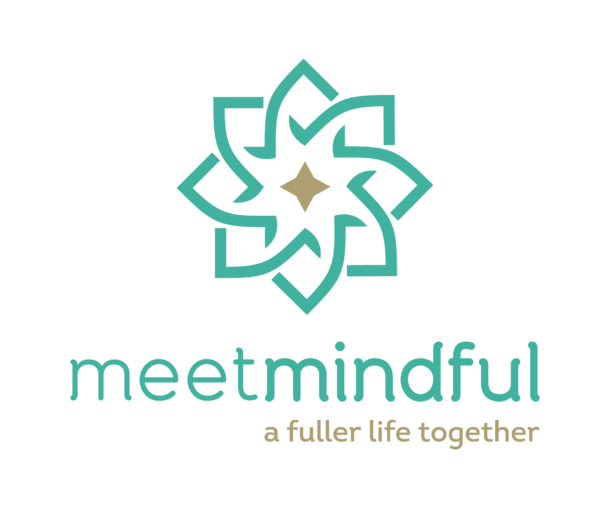Use your voice. Speak your truth. Be honest. Easier said than done…until now. Get ready for fearless communication, Darling. This is a step-by-step guide.
In the first part of this Fearless Living in 2015 piece, I shared an intimate story of a dear friend’s experience of growth and transformation.
While this was a vital shift in her stepping into healthier, more mindful dating relationships, it was even more crucial for her relationship with herself.
To recap, “Sarah” broke through her early experiences with her father, where she learned that she needed to suppress her thoughts and feelings because they were not as important as others.’ Through experiencing an ongoing pattern of not being seen, heard, or honored in her dating relationships, she took the courageous step to work on herself in therapy, to find—and use—her brilliant voice.
Through learning how to use her voice, she transformed her relationships—and it can transform yours too.
Your First Step: Early Lessons
The first step to recognizing your communication barriers is to take a closer look at the lessons you learned in your earliest relationships (e.g., parents, friends, early significant others). Think about what messages you received on what was okay/not okay to talk about, did others’ needs take precedence over yours, was your voice (thoughts and feelings) heard, etc.?
I know, I know. Many of you are probably thinking, “What does my past have to do with the present?” Or, “I’ve dealt with my past, I want to focus on the now.” Trust me, there is a wealth of information hidden in the deep crevices of your past. Taking some time to reflect on what and how you became you will help you become a better version of you.
Next Step: Present Challenges
Once you have reflected a bit on what you learned about communication, think about how you see these early lessons playing out in your relationships as an adult.
-
- Are there certain people that are more difficult to communicate with?
-
- Are there certain topics that create an immense amount of anxiety or avoidance in you when you even think about talking about them?
-
- What are your communication hot buttons in your relationships?
- How are you received when you expressed your thoughts, feelings, boundaries, etc.?
Spending some time exploring these early messages will likely reveal subtle—or significant—blocks for you in your interpersonal communication.
Communication is Key
Yes, that means you have to talk—about a lot. While there are certainly nonverbal ways to express how you are feeling—wink, wink—verbal communication of your thoughts, feelings, boundaries and desires is essential to a developing duo.
No matter how easy this may seem in theory, believe me, tons of people struggle with talking about even the small stuff, let alone those all-too-touchy topics.
Let’s Start Small
The first lesson in communicating about the “small stuff” is to learn that there is no “small stuff.”
Let me explain two things.
1. Even with the small stuff, things can seem big. Some people actually have more difficulty with the small stuff, like saying where you’d like to go on a date, or that you don’t like sushi, or that you’d rather scratch your eye balls out than watch another (insert least favorite sporting event or genre of movie). Sorry about the graphic nature of that last one, but hopefully you are catching my drift.
2. Even the “small stuff” matters in the larger picture. No, I’m not saying you need to fret about every little thing you utter on a date (no, not even the stupid joke you tried to tell and failed miserably at).
I am encouraging you to think about all of your communication—big and small—with integrity, honesty, mindfulness, and love for yourself and others. As spiritual author don Miguel Ruiz outlines in The Four Agreements, be impeccable with your word.
 Ready for the Big (aka touchy) Stuff?
Ready for the Big (aka touchy) Stuff?
This is where many people—especially those who learned some less helpful communication lessons growing up—tend to experience the most stress, hesitance, or altogether avoidance.
Common Touchy Topics:
-
- Commitment
-
- Former Relationships
-
- Values and Beliefs
-
- Hurt Feelings
-
- Trust and Betrayal
-
- Boundaries (Emotional and Physical)
-
- Future Goals
-
- Family Background
-
- Loss
- Breaking Up / Dating Other People
These “touchy” topics can be difficult to address within a long-term relationship, let alone a newly forming one. Because these topics shape one’s sense of character, identity and sense of the world and those in it, most people feel strongly about them. Thus, talking about them can feel super vulnerable, especially if there is a sense of not being heard or understood.
How to Have Fearless Talks
The Golden Rule is a good measure to set the stage for the Big Talks, but these aspects will give you some specific guidelines to consider.
Approach
Timing – Pick a time that feels right for the nature and extent of the relationship (e.g., not a first date, not the morning of your partner’s job interview, not at 11pm at night). Also select a time that both of you can be emotionally present to talk and listen.
Preface – Let the other person know that you have something important to discuss. This communicates that this might be difficult for you and important to you. A little prep work goes a long way in paving a smooth road for communication.
Modality
In Person – The best way to communicate about both big and small topics in a dating or long-term relationship is to do so in person. Period. Being able to talk about your thoughts and feelings face to face, witnessing their nonverbal reactions and being present for what they might say, is a key step to having fearless talks.
Phone, Email, Text, Etc. – If you can’t say it to his/her face (or facetime/skype if long-distance) then you are not practicing mindful communication. Phone calls are acceptable in some cases, and if it is truly hard to talk in person, sending an email could be a good initial step to talking. Oh, and how about texting? Never. It defies the definition of fearless.
Talking Role
Use “I” Messages – Speak from your experience, about your feelings (e.g., “I felt X when Y happened.) Your listening partner cannot defend against what you say when stated in this manner.
Stay in the Present – While your past may influence the present, do your best to check your past at the door. Taking the time to work on your past should help you resolve what is needed to stay in the present.
Stay Calm – Sometimes these talks can be activating for you and your listener. Stay calm and steady. If needed, take a break and come back to it another time.
Listening Role
Actively Listen – Instead of thinking about what to say next, just listen. Take it all in and then demonstrate you heard your partner by reflecting key points of what they said back to them. This enhances the feeling of being heard.
Wait – It likely took your special someone awhile to mentally prepare to talk to you, so give them some time to get it all out before you ask questions or share how you feel about what they said.
Whether the talks are small or big, learning how to use your voice and how to be heard is essential to creating mindful relationships. With some reflection on early lessons and courage to try a new way, you’re ready to have some fearless talks that will take your relationships to a deeper level.
[image: via Pixabay]
References:
- Ruiz, M. (1997). The four agreements: A practical guide to personal freedom. San Rafael, Calif.: Amber-Allen Pub.


